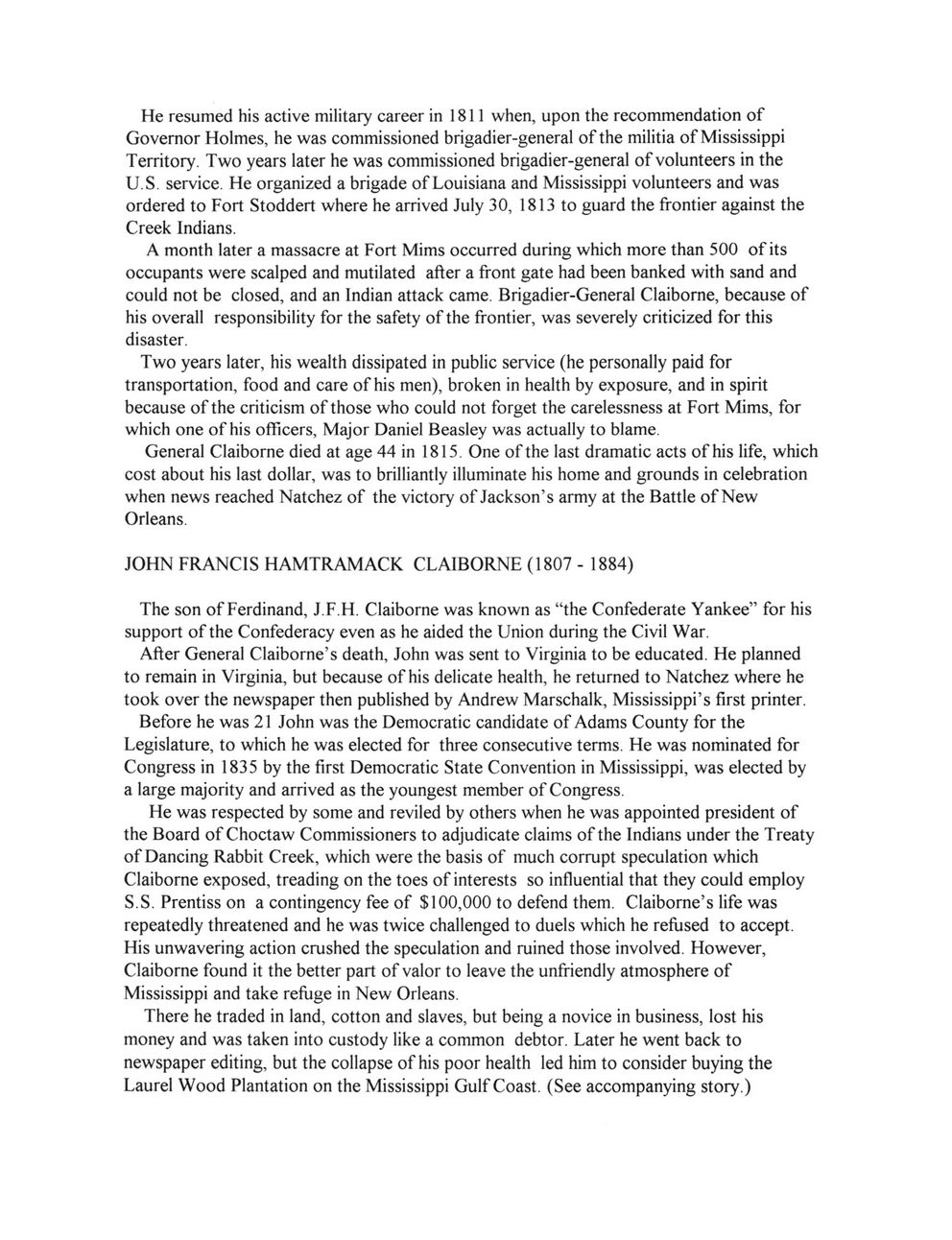This text was obtained via automated optical character recognition.
It has not been edited and may therefore contain several errors.
He resumed his active military career in 1811 when, upon the recommendation of Governor Holmes, he was commissioned brigadier-general of the militia of Mississippi Territory. Two years later he was commissioned brigadier-general of volunteers in the U.S. service. He organized a brigade of Louisiana and Mississippi volunteers and was ordered to Fort Stoddert where he arrived July 30, 1813 to guard the frontier against the Creek Indians. A month later a massacre at Fort Mims occurred during which more than 500 of its occupants were scalped and mutilated after a front gate had been banked with sand and could not be closed, and an Indian attack came. Brigadier-General Claiborne, because of his overall responsibility for the safety of the frontier, was severely criticized for this disaster. Two years later, his wealth dissipated in public service (he personally paid for transportation, food and care of his men), broken in health by exposure, and in spirit because of the criticism of those who could not forget the carelessness at Fort Mims, for which one of his officers, Major Daniel Beasley was actually to blame. General Claiborne died at age 44 in 1815. One of the last dramatic acts of his life, which cost about his last dollar, was to brilliantly illuminate his home and grounds in celebration when news reached Natchez of the victory of Jackson?s army at the Battle of New Orleans JOHN FRANCIS HAMTRAMACK CLAIBORNE (1807 - 1884) The son of Ferdinand, J.F.H. Claiborne was known as ?the Confederate Yankee? for his support of the Confederacy even as he aided the Union during the Civil War. After General Claiborne?s death, John was sent to Virginia to be educated. He planned to remain in Virginia, but because of his delicate health, he returned to Natchez where he took over the newspaper then published by Andrew Marschalk, Mississippi?s first printer. Before he was 21 John was the Democratic candidate of Adams County for the Legislature, to which he was elected for three consecutive terms. He was nominated for Congress in 1835 by the first Democratic State Convention in Mississippi, was elected by a large majority and arrived as the youngest member of Congress. He was respected by some and reviled by others when he was appointed president of the Board of Choctaw Commissioners to adjudicate claims of the Indians under the Treaty of Dancing Rabbit Creek, which were the basis of much corrupt speculation which Claiborne exposed, treading on the toes of interests so influential that they could employ S.S. Prentiss on a contingency fee of $100,000 to defend them. Claiborne?s life was repeatedly threatened and he was twice challenged to duels which he refused to accept. His unwavering action crushed the speculation and ruined those involved. However, Claiborne found it the better part of valor to leave the unfriendly atmosphere of Mississippi and take refuge in New Orleans. There he traded in land, cotton and slaves, but being a novice in business, lost his money and was taken into custody like a common debtor. Later he went back to newspaper editing, but the collapse of his poor health led him to consider buying the Laurel Wood Plantation on the Mississippi Gulf Coast. (See accompanying story.)

Claiborne, J.F.H Claiborne-J.F.H-094